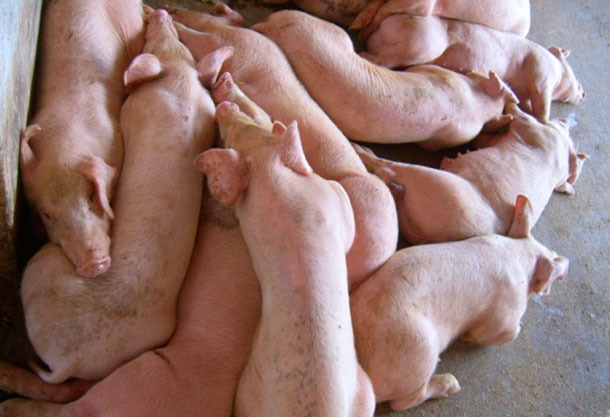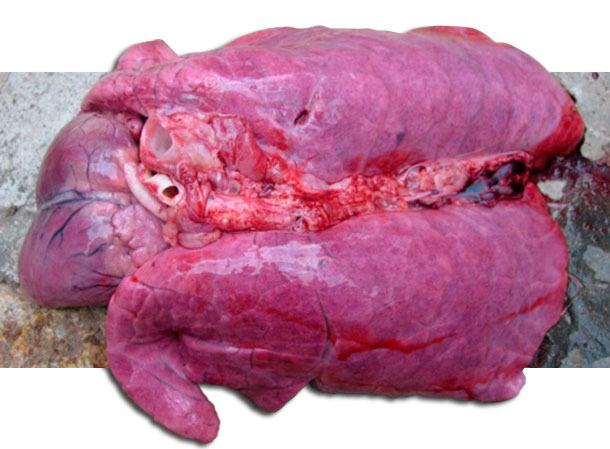The porcine reproductive and respiratory syndrome (PRRS) is an economically important viral disease for the global swine industry. During the past years, highly pathogenic PRRS (HP-PRRS) outbreaks brought about dramatic losses to pig production in China and other Asian countries. The recognized causative agent of HP-PRRS is a variant PRRS virus (PRRSV) with a higher pathogenicity/virulence, which is called HP-PRRSV. HP-PRRS is characterized by a high morbidity and mortality in pigs of all ages. The HP-PRRSV initially emerged in China in 2006 and rapidly spread to Vietnam in 2007, and subsequently to Southeastern Asian countries, including Vietnam, Laos, Philippines and Cambodia, etc. This virus, that belongs to the type-2 PRRSV, shares a unique discontinuous 30-amino acid deletion in its non-structural protein 2. It could be speculated that the emergence of the HP-PRRSV experienced a gradual variation and accumulation progress of genome changes from the Chinese early virus. The characteristic deletion within the genome of the HP-PRRSV is not related to its fatal virulence for pigs, and it can only be used as a marker to distinguish the Chinese HP-PRRSV from the North American strains.


Figure 1. Pigs affected by the HP-PRRSV
Clinical presentation and autopsy findings
In China, the pig herds that suffered, clinically, the HP-PRRSV infection, showed more severe reproductive failures in pregnant sows, higher morbidity (usually 50%-100%), and the mortality rates ranged from 20% to 100% in pigs of all ages. More than 40% of the infected pregnant sows exhibited abortions. All the infected pigs displayed a high fever of over 41℃. Total mortality rates were recorded in Laos, and they ranged from 6.02% in boars to 91.28% in piglets. The affected pigs exhibited clinical symptoms that included depression, anorexia, lethargy, and rubefaction of the skin and the ears (Fig. 1). Most of the ill pigs showed severe respiratory disorders, i.e. dyspnea, asthma, sneezing, coughing, and increased eye secretion. Diarrhoea and neurological signs could be seen in some cases. Following necropsy of the dead pigs, the common lesions included dermatorrhagic, severe pulmonary oedema and consolidation (Fig. 2), and oedema of the lymph nodes. Some cases presented pulmonary interstitial hyperplasia and congestion, and mucosal congestion, hydropsy and ulcers in the gastro-intestinal tract, even oedema and congestion in the brain. With co-infection by other pathogens or secondary bacterial infections, focal haemorrhagic spots, abscessation, and haemorrhagic pneumonia, pericarditis, fibrinous pleuropneumonia and peritonitis could be observed. The affected pigs always displayed severe secondary bacterial infections including Escherichia coli, Streptococcus suis, Haemophilus parasuis, etc. The co-infections with classical swine fever virus (CSFV), pseudorabies virus (PRV), porcine circovirus type 2 (PCV2), as well as Mycoplasma hyopneumoniae, were often diagnosed in the pig herds affected with the HP-PRRSV.

Figure 2. Severe lung oedema in a dead pig affected by the HP-PRRSV.
Disease control
The control measures against the HP-PRRSV infection include the vaccination of the pig herds, the antibiotic treatment of the diseased pigs for reducing secondary bacterial infections, and the biosecurity measures on the pig farms. In China, vaccination using the attenuated live vaccine is the primary choice for the majority of the pig producers for preventing and controlling HP-PRRS. Several attenuated vaccines, including the ones derived from low pathogenic strains of the PRRSV and from the HP-PRRSV strains, have been applied extensively. Although these attenuated vaccines can provide effective protection against the HP-PRRSV for pigs, the safety of the vaccines derived from the HP-PRRSV should be a case for concern. The responsible application of these vaccines is essential on pig farms. Type 1 and Type 2 attenuated PRRSV vaccines have been reported to provide partial heterologous protection against different Chinese HP-PRRSV isolates. Vaccination with a commercially available type 2 attenuated vaccine in young pigs has been shown to decrease the length of the viraemia and the viral titre, diminishing the length of the high fever and reducing the macroscopic lung scores following heterologous challenge with a Chinese and Vietnamese HP-PRRSV isolate. These experimental data suggest that the use of attenuated vaccines is helpful for the control of the HP-PRRSV outbreaks.
Conclusions
A lot of work needs to be done for completely controlling HP-PRRS. The implementation of a proper regional control and eradication programs against PRRS is necessary in China and the Asian countries. Meanwhile, the increasing diversity of the PRRSV should be taken into consideration for developing more effective and safe vaccines.







